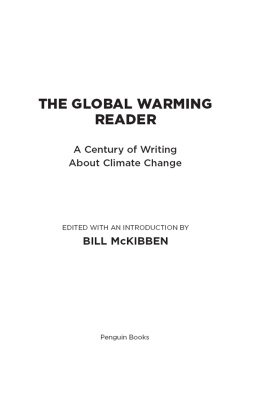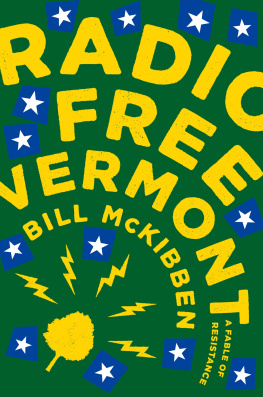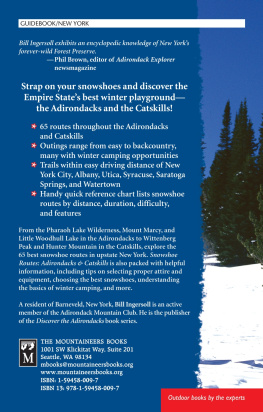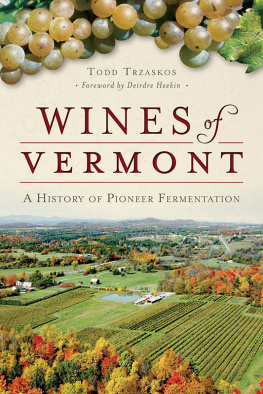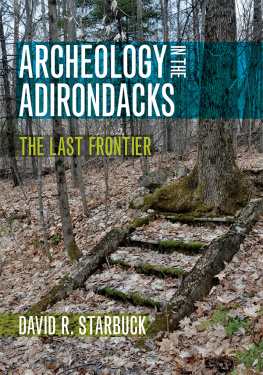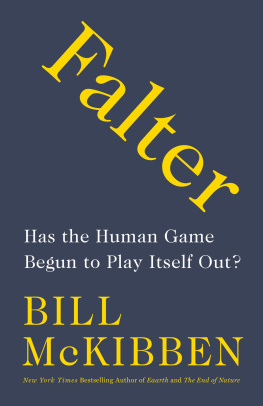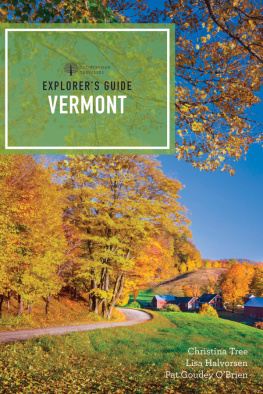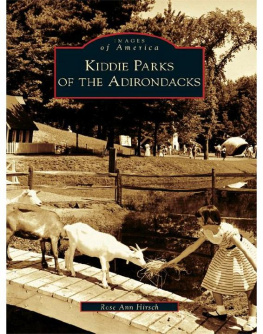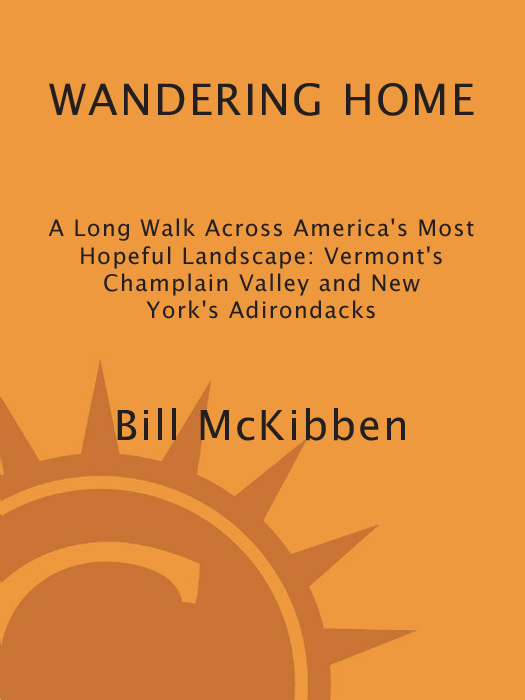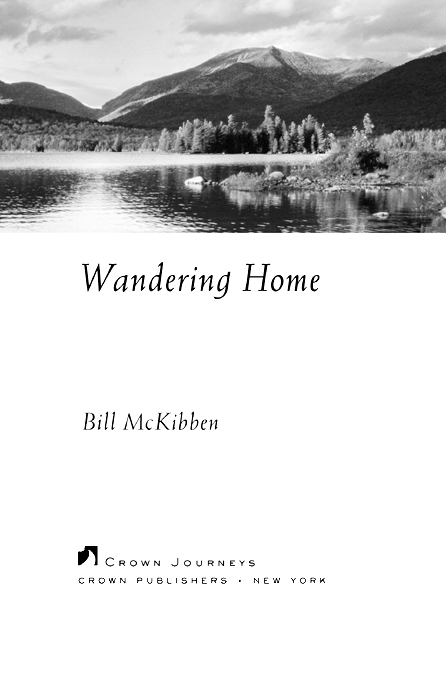A LSO IN THE C ROWN J OURNEYS S ERIES
Lands End: A Walk in Provincetown
by Michael Cunningham
After the Dance: A Walk Through Carnival in
Jacmel, Haiti by Edwidge Dandicat
City of the Soul: A Walk in Rome
by William Murray
Washington Schlepped Here: Walking in the Nations
Capital by Christopher Buckley
Hallowed Ground: A Walk at Gettysburg
by James M. McPherson
Fugitives and Refugees: A Walk in Portland, Oregon
by Chuck Palahniuk
Blues City: A Walk in Oakland
by Ishmael Reed
Time and Tide: A Walk Through Nantucket
by Frank Conroy
Lost in My Own Backyard: A Walk in Yellowstone
National Park by Tim Cahill
Never a City So Real: A Walk in Chicago
by Alex Kotlowitz
The Great Psychedelic Armadillo Picnic:
A Walk in Austinby Kinky Friedman
Times Magpie: A Walk in Prague
by Myla Goldberg
A LSO BY B ILL M C K IBBEN
Enough
Long Distance
Hundred Dollar Holiday
Maybe One
Hope, Human and Wild
The Comforting Whirlwind
The Age of Missing Information
The End of Nature
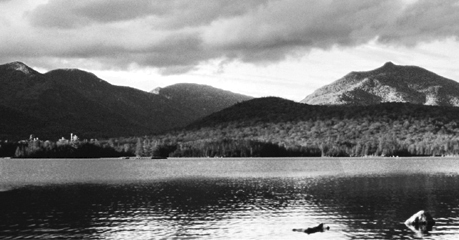
A L ONG W ALK A CROSS
A MERICAS M OST H OPEFUL L ANDSCAPE:
V ERMONTS C HAMPLAIN V ALLEY AND
N EW Y ORKS A DIRONDACKS
For Nick, Jackie, Gary, and Kathy on the west,
and John, Rita, Warren, and Barry in the east
M Y MOOD WAS DARKER THAN IT SHOULD HAVE been for the start of a journey. For one thing, I had packed too heavy; the stove, the pad, the water filter, the tent that would make my camp theoretically comfortable, were for the moment making my shoulders actually sore and my knees actually ache. And I hiked in a cloudno views, just a soggy mist. The trailVermonts Long Trailran up and down like a giants EKG, farther than my rather too cursory glance at the map had led me to expect. Id taken an easy fall romp with a daypack along this path the year before, and remembered dimly that a field of ferns marked the approach of campnow, heavy-laden, I walked through just such a fern field ten times in the course of the afternoon, each time more certain that this must be the one. But no, and no, and no, and no. Not until dinnertime, with ten solid hours of walking behind me, did I arrive, sore-footed, calf-cramped, and more than a little uncertain about the weeks of walking that lay ahead, at a small lean-to 750 feet beneath the summit of Mount Abraham, Vermonts third-highest peak.
I sprawled out on top of my sleeping bag and commenced infusing sandwiches into my system. As I proceeded, the fog started to clear, and with it my funk. So I dug an extra layer from my pack and decided, after several moments hesitation, that I still had energy enough for the 20-minute climb to the top of the peak and the sunset view. It was, as it turned out, one of the better decisions of my life.
Mount AbrahamMount Abe to its neighborscommands a 360-degree view. South and north, the narrow ridge of the Green Mountains stretches off toward Killington and Camels Hump respectively. To the east, the vista stretches easily across Vermont, barely fifty miles wide at this point, and into New Hampshires White Mountainson a clear day you can make out Mount Washington. But most times, and especially tonight, the western vista demands the most attention. Lake Champlain lies in the middle distance, gleaming like a sheet of gold foil in the late sun. It runs 125 miles from south of Ticonderoga to north of the Canadian border. Fourteen miles wide at its broadest, 400 feet deep at its deepest, Champlain is Americas sixth-largest lake. (Not Great, but great.) Behind it, the jumbled High Peaks of the Adirondacks rise hard and fast, 5,000 feet above the lakeas fast and as far as the Wasatch above Salt Lake or the Rockies over Boulder. And in the foreground spreads the broad and fertile Vermont valley that lies between the Greens and the lakeshore.
Tonight a scrim of rain clouds advanced toward me, a gauzy curtain of gray that only made the lake and mountains behind gleam the shinier. It was clearly about to rain, but the worst of it seemed set to pass just north and south; a slight gap in the line headed toward my perch on Mount Abe. Hearing no thunder, I stayed put, and sure enough, the cloud washed up over me. For a few moments, even as the world turned gray, I could still make out the reflecting mirror of the lake; finally it too vanished and all was gloom. But then, even more quickly than it had descended, the cloud swept through, and behind it the world was created fresh. No scrim now, just the fields, the lake, the peaks. When a double rainbow suddenly appeared, it was almost too mucha Disney overdose of glory. But then a rainbow pillar rose straight into the southern sky, and east of that a vaporous twin appeared, and then a kind of rainbow cloud to the north. Soon seven rainbows at once. Then the sun reached just the right angle so that the mist whipping up the face of the peak flashed into clouds of color as it washed over me: a rose cloud, a cloud of green. And always behind it the same line of lake, the same jag of mountain. All at once it struck me, struck me hard, that this was one of those few scenes I would replay in my mind when I someday lay dying.
When I lay living, toofor the territory revealed this evening, the view west from this pinnacle, was the turf of my adult life. To the south I could see the Vermont mountain town of Ripton, set at 1,500 feet, hard against the western spine of the Greens. Id stepped off this morning from my house there, which we built a few years back, on land once owned by Robert Frost. A quarter-mile through the woods Id passed the writing cabin where hed spent his last thirty summers, stocking our cupboard of Yankee imagery with his woodsmen and hill-farmers and sleigh drivers. Now that New Hampshires Old Man of the Mountain has crashed into granite smithereens, surely Frosts white-haired, craggy visage is New Englands most iconic face.
But to the distant west I could see, or so I told myself, Crane Mountain, the peak in whose shadow Id spent most of my adult life. Forget New EnglandCrane lies smack in the center of New Yorks vast Adirondack wilderness. I have a house there, too, also set at 1,500 feet, and it was where I was bound on this walk. Seventy miles, perhaps, as the crow flies, but a couple of hundred on my planned route, which unfolded below me in the dazzling dusk.
Ive not moved far in my life. But fairly few people have had the chance to know both sides of this lake with any real closeness. Anyone with the good fortune to own two houses would logically have one at the beach and one in the mountains, or one in the city and one in the countryI know that. But Ive not been able to drag myself away from this small corner of the planet. To me, this country on either side of Lake Champlain, though it has no name and appears on no map as a single unit, constitutes one of the worlds few great regions, a place more complete, and more full of future promise, than any other spot in the American atlas.
This region (Adimont? The Verandacks?) includes the fertile farms and small woodlots directly beneath me in the Champlain Valley, where a new generation of settlers is trying to figure out new ways to responsibly inhabit the landways to farm and log and invest that enrich in the fullest sense of the word. It encompasses the fine small city of Burlington to the north. And across the lake it is made whole by the matchless eastern wilderness of the Adirondacks, the largest park in the lower forty-eight, 6 million acres, bigger than Glacier, Grand Canyon, Yellowstone, and Yosemite combined. At the risk of hyperbole and chauvinism, let me state it plainly: in my experience, the world contains no finer blend of soil and rock and water and forest than that found in this scene laid out before mea few just as fine, perhaps, but none finer. And no place where the essential human skillscooperation, husbandry, restraintoffer more possibility for competent and graceful inhabitation, for working out the answers to the questions that the planet is posing in this age of ecological pinch and social fray.



